Rory McIlroy is a Masters Champion
In the pantheon of greatness that chronicles the accounts of high-stakes competitive Golf and to those titans of the game whom we pay homage, applaud, and honor amidst the tournaments and Major Championships they have collected along the way, Rory McIlroy’s journey to his rightful place in the sport’s history inspires.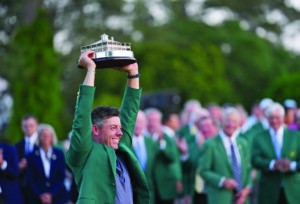
His achievement, with its historical significance and the approval of sports enthusiasts around the globe, is a testament to his dedication and talent.
On Sunday, April 13, 2025, McIlroy etched his name in the annals of golf history by winning the 89th edition of the Masters Golf Tournament at the Augusta National Golf Club. His victory was not just a win but a career Grand Slam of Major Professional Golf Tournaments, a feat achieved by only a handful of golfing legends, including Gene Sarazen, Ben Hogan, Gary Player, Jack Nicklaus, and Tiger Woods.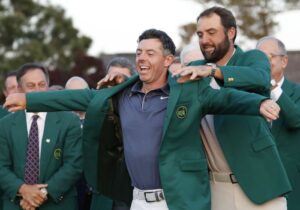
Golf’s saga is replete with luminaries who have sought the ultimate summit of their sport, the historic honor of a Grand Slam Champion.
Yet, the rarity of this achievement is underscored by the names of those who have fallen short: Lee Trevino, Jonny Miller, Greg Norman, Ernie Els, Nick Price, Arnold Palmer, James Braid, John Taylor, Bryron Nelson, Peter Thompson, Seve Ballesteros Crenshaw, Nick Faldo, and Brooks Koepka.
These players, all Major Champions, are not simply great competitors; they are also esteemed members or potential inductees of the Hall of Fame, with only one laurel absent from their illustrious careers- the Grand Slam.
However, pursuing Golf at the highest levels is a rollercoaster of emotions. It is not a banal practice or predictable activity, but a complex and learned skill that cannot be gifted, bestowed, or wished for. It must be pursued, embraced, appreciated, and accepted for its vagaries, whims, quarks, dreams, and heartaches.
The game has changed over the ages and morphed as technology, equipment, skill, and proficiency have improved, but the basic concept has remained the same.
But the quest for Golf’s ultimate distinction, to be crowned a virtuoso of your sport, and its pursuit of excellence, is daunting even for the most determined and focused athletes.
This makes Golf the greatest, most challenging, engaging, and demanding game ever conceived by man.
Golf was born over 400 years ago on the sunbaked fields of Edinburgh, Scotland, amid the gorse and thistle-populated dunes of northern shores and sprinkled amidst the inlets and estuaries that abutted the Firth of Forth.
Wind and rain shaped the barren, sandy linkslands that gave rise to golf, which today’s professional players enjoy and benefit from greatly.
The early history of Golf references Old Tom Morris, the Father of Professional Golf, who sired a son and taught him the game’s nuances, intricacies, and finer points as the sport’s first mentor and teacher.
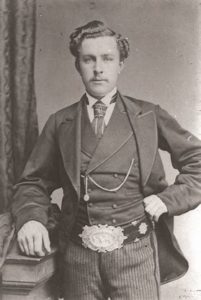 Young Tom learned his lessons well, became the sport’s first prodigy, winning four consecutive Open Championships, and is still, to this very day, the youngest Major Champion of all time.
Young Tom learned his lessons well, became the sport’s first prodigy, winning four consecutive Open Championships, and is still, to this very day, the youngest Major Champion of all time.
Along the way, Young Tom became sports’ first superstar with his stellar play, boldness, swagger, and derring-do.
He single-handedly boosted the lowly Golf Professional and his downtrodden occupation into respectability, status, and prominence on Golf’s first grand stage.
Every golf professional who makes a living from Golf today owes Young Tom his livelihood.
Any investigation into the greatest player in the history of Golf must start with Major Championships.
You can thank Bobby Jones for that.
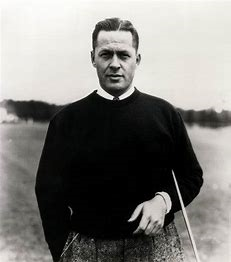 It was no contest in Golf’s formative years, the early twentieth century. Bobby Jones was the dominant player in the game. He won four US Opens, three British Open Championships, five US Amateurs, and one British Amateur. Bobby Jones won thirteen significant championships, including all four “Major Championships” in 1930. It was described as the “Grand Slam,” setting a standard for golf posterity, earning him a ticker tape parade down Wall Street in New York City and a fast track into the history books.
It was no contest in Golf’s formative years, the early twentieth century. Bobby Jones was the dominant player in the game. He won four US Opens, three British Open Championships, five US Amateurs, and one British Amateur. Bobby Jones won thirteen significant championships, including all four “Major Championships” in 1930. It was described as the “Grand Slam,” setting a standard for golf posterity, earning him a ticker tape parade down Wall Street in New York City and a fast track into the history books.
Mr. Jones promptly retired from competitive Golf, rejoined his law practice, and built a country club that would become Augusta National, home to the Masters, where Rory McIlroy punched his ticket to greatness this past week.
In time, the Masters and the PGA Championship would supplement the United States and British Amateurs as “so-called” Majors in golf jargon when Professional Golf replaced Amateur Golf as the domain of the best players in the world.
If, based on golf history, Major Championships are the gold standard for rating players, and, in my opinion, it is, then Jack Nicklaus, with eighteen majors, is the clear winner. Tiger Woods is second with fifteen. Bobby Jones is next with thirteen. Walter Hagen is fourth with eleven. Ben Hogan and Gary Player have nine each. Tom Watson is seventh with eight majors, and four players round out the top ten with seven: Arnold Palmer, Gene Sarazen, Sam Snead, and Harry Vardon; all are legends in Golf and in the Hall of Fame.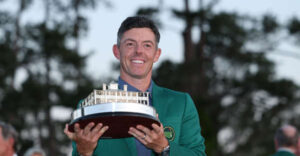
Rory McIlroy now has five and has become the sixth member of the Grand Slam club, adding to his accomplishments.
McIlroy is the first European player to reach five majors since Nick Faldo in 1992 and the first in men’s golf history to win the slam.
McIlroy’s victory snaps a streak of seven consecutive men’s major championships won by a player from the United States.
I attended Roy’s Championship press conference virtually on Sunday night, and you can listen to the complete interview here.


